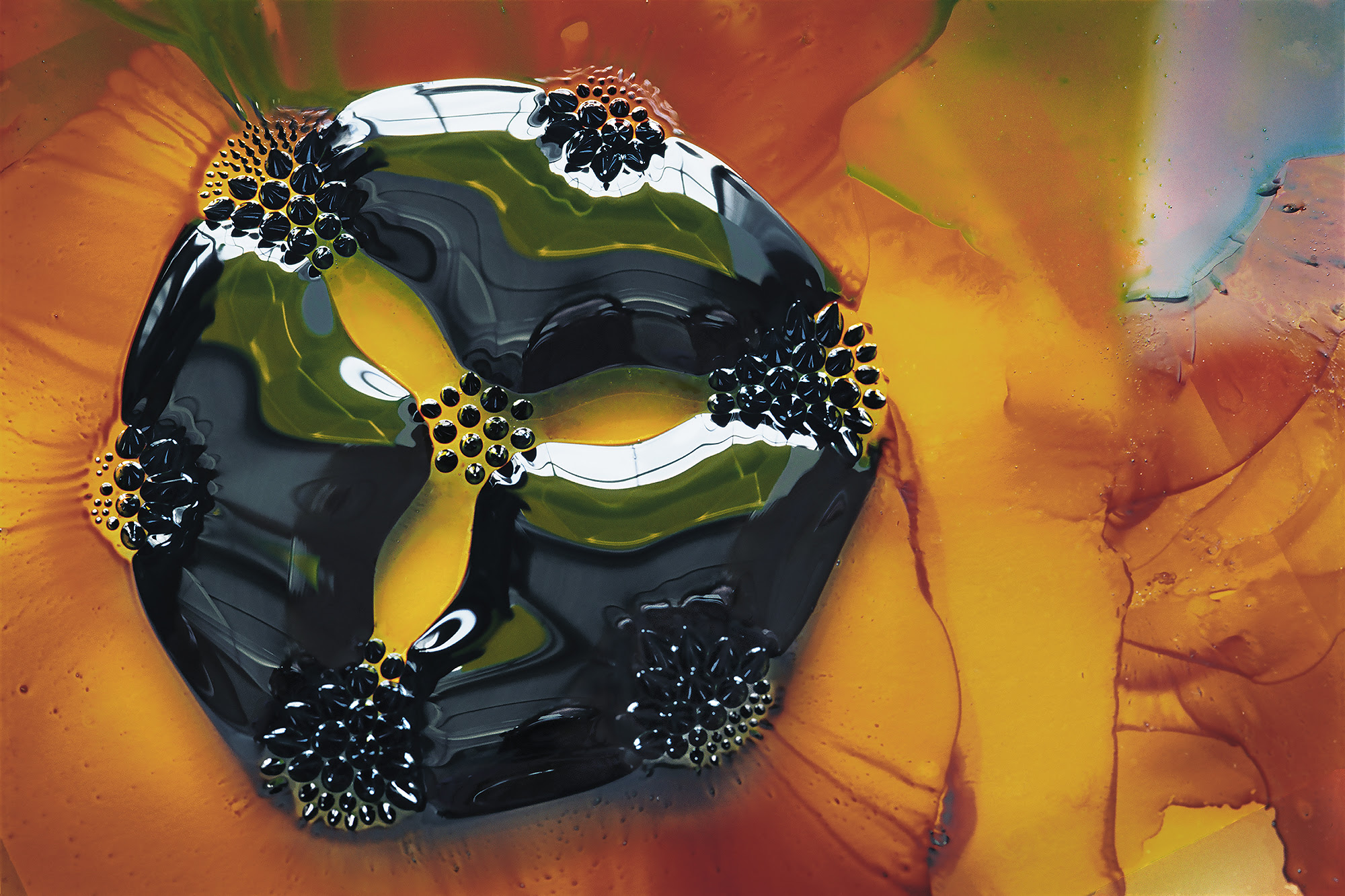The Attraction of Liquid Magnets
Liquid magnets lend themselves to art, as well as medical research.

Ferrofluid, Felice Frankel
Magnets are pretty cool. The way they attract and repel—it’s like magic. But a liquid magnet? That’s even cooler. Called a ferrofluid, such a liquid is comprised of tiny magnetic particles between 10 and 15 nanometers wide suspended in a fluid. In the presence of a magnetic field, the material ebbs and flows according to where the field tells it to go. Instead of an amorphous puddle, it can pool into some funky, spikey shapes—making for some amazing pictures like the bizarrely beautiful one above.
This particular photo shows a single drop of a ferrofluid that’s made from magnetic iron particles suspended in oil. To form that pattern, Felice Frankel, a photographer and researcher at MIT, placed a small, three-centimeter-wide drop on a glass slide. Underneath are seven round magnets—like the kind on your refrigerator—arranged so that six of them surround the last. Each magnet forces the particles in the liquid to align with the magnetic field, forming the spikes seen in the photo.
To add some color, Frankel inserted a yellow Post-It note in between the magnets and the slide. The image is part of an exhibition at the MIT Museum on communicating science through photography, which is showing from now through March 2016. (Frankel is also co-instructing a course on science photography.)
Ferrofluids, though, have been around since the 1960s. And they don’t all just sit around, looking pretty. For example, they’re widely used as nearly frictionless seals to maintain a vacuum while still allowing for moving or rotating parts. Some computer hard drives, for instance, rely on a magnet to hold a ferrofluid seal in place, which keeps the disk protected in a clean, dust-free vacuum. Because the ferrofluid is liquid, the disk can spin freely with hardly any friction.
Understanding ferrofluids can also inform research into fighting diseases like cancer. No, doctors won’t be infusing patients with that black liquid. The idea is to inject magnetic nanoparticles that help deliver tumor-destroying drugs. Their movement through liquids like blood could be controlled by a magnetic field, similar to particles in a ferrofluid.
By targeting tumors directly, you can avoid collateral damage to healthy cells. (Cancer drugs tend to be quite nasty and can cause side effects.) But getting those particles to accumulate at the tumor isn’t easy. “That is the biggest challenge in nanomedicine today,” says Carlos Rinaldi, a professor of biomedical and chemical engineering at the University of Florida.
One potential way to deliver drugs is with tiny spherical containers called liposomes, which are made of the same stuff as a cell’s membrane. You can fill the liposomes with drugs and attach the nanoparticles on the outside. Once the liposomes reach a tumor, the doctor turns on a magnetic field, which flips the nanoparticles back and forth, like how a compass needle goes crazy when next to a magnet. All that motion generates heat, which melts the liposome and releases the drug.
Or, instead of riding in a liposome, the drug could chemically bind to the nanoparticles. The magnetically induced heat would then break that bond and unleash the drug. The heat itself could also help kill the tumor, as some drugs work better at higher temperatures.
Saving lives drives much of the research in ferrofluids, of course. Still, you can’t discount their mesmerizing patterns and behaviors. After all, that’s what inspired Rinaldi to study ferrofluids in the first place. “The idea that you can use a magnet to manipulate a liquid—to me, that’s just so cool,” he says.
Marcus Woo is a freelance science writer based in the San Francisco Bay Area. He has written for Wired, New Scientist, and BBC Earth and Future, among others.